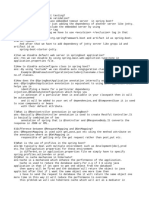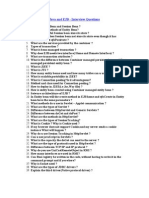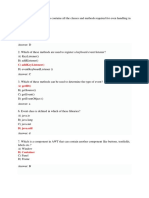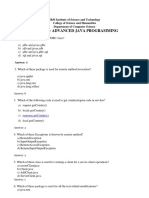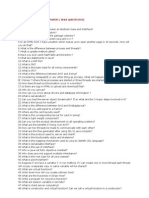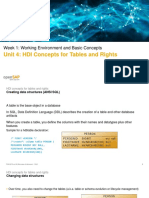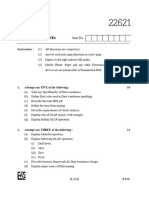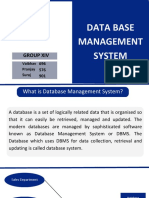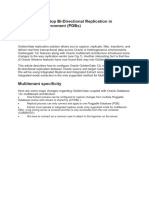0% found this document useful (0 votes)
72 views6 pagesAdvance Java Questions With Answers 1749286738
The document is a comprehensive Q&A guide on advanced Java topics, covering JDBC, servlets, JSP, Hibernate, Spring Framework, and REST APIs. It includes key concepts, definitions, differences between related terms, and best practices for each topic. The content is structured in a question-and-answer format, making it a useful resource for learners and professionals in Java development.
Uploaded by
bhaveshpatil.0425Copyright
© © All Rights Reserved
We take content rights seriously. If you suspect this is your content, claim it here.
Available Formats
Download as PDF, TXT or read online on Scribd
0% found this document useful (0 votes)
72 views6 pagesAdvance Java Questions With Answers 1749286738
The document is a comprehensive Q&A guide on advanced Java topics, covering JDBC, servlets, JSP, Hibernate, Spring Framework, and REST APIs. It includes key concepts, definitions, differences between related terms, and best practices for each topic. The content is structured in a question-and-answer format, making it a useful resource for learners and professionals in Java development.
Uploaded by
bhaveshpatil.0425Copyright
© © All Rights Reserved
We take content rights seriously. If you suspect this is your content, claim it here.
Available Formats
Download as PDF, TXT or read online on Scribd
/ 6

















